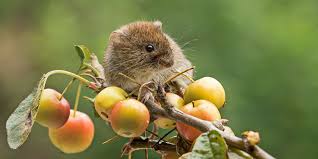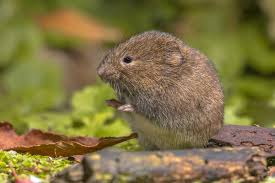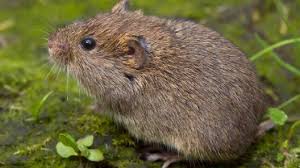Voles, scientifically known as Microtus, are small mammals that live in various habitats around the world. These tiny creatures play a significant role in their ecosystems, despite their unassuming size.
In appearance, voles resemble mice, but they have distinguishing features such as short tails and stockier bodies. Their fur comes in various shades, helping them blend into different environments, from grasslands to forests.
These diligent rodents are herbivores, primarily feeding on grasses, roots, and other vegetation. Their constant foraging not only sustains them but also influences the vegetation around them. Voles contribute to seed dispersal, promoting the growth of plants and maintaining the balance of their ecosystems.
One interesting aspect of voles is their breeding habits. They reproduce rapidly, with females capable of having multiple litters in a year. This high reproductive rate ensures the survival of the vole population, but it also attracts predators such as birds of prey, snakes, and carnivorous mammals.
Despite their essential role in the ecosystem, voles can sometimes be considered pests. Their burrowing habits may damage crops and gardens, causing frustration for farmers and gardeners. Striking a balance between appreciating their ecological contribution and managing potential conflicts with humans is crucial.
Additionally, voles, with their scientific name Microtus, may be small in size, but they wield a considerable impact on the environments they inhabit. Through their feeding habits, reproduction, and interactions with other species, voles contribute to the delicate balance of nature, highlighting the interconnectedness of all living beings in our diverse world.
Read Also: Erysipelas in Pigs: Causes, Signs and Methods of Treatment
Plants Affected by Voles (Microtus)

Voles, such as those belonging to the Microtus genus, can impact various plants in their habitats. These tiny rodents, while playing a crucial role in ecosystems, may also pose challenges for certain plant species.
Voles are herbivores, and their diet mainly consists of grasses, roots, and other vegetation. This feeding behavior can affect plants in several ways:
1. Grazing on Grasses: Voles may consume grasses that serve as primary ground cover. This can lead to changes in the composition of plant communities and impact the overall structure of grassy areas.
2. Root Damage: Voles are known to gnaw on the roots of plants. This behavior can be detrimental to the health of individual plants, affecting their ability to uptake nutrients and water. In gardens or agricultural settings, this root damage may result in reduced crop yields.
3. Seed Consumption: Voles play a role in seed dispersal, but they may also consume seeds, affecting the germination and growth of certain plant species. This can influence the regeneration of vegetation in a given area.
4. Burrowing Impact: Voles create burrows in the ground for shelter. The excavation process can disturb the soil and plant roots, potentially causing damage to the root systems of nearby plants.
5. Girdling of Trees: In some cases, voles may chew on the bark at the base of trees, a behavior known as girdling. This can lead to significant harm to young trees, affecting their growth and survival.
While voles contribute positively to ecosystems by aiding in seed dispersal and influencing vegetation dynamics, their impact on specific plants can present challenges, especially in areas where human interests intersect with their natural behaviors. Finding ways to manage potential conflicts and mitigate damage is important for maintaining a harmonious balance between voles and the plant life they interact with.
Damages Caused by Voles

Voles, scientifically known as Microtus, can cause various damages due to their feeding and nesting behaviors. Despite their small size, these rodents can have significant effects on both natural environments and human activities. Some common damages caused by voles include:
1. Crop Damage: In agricultural settings, voles can be considered pests as they may feed on crops, such as grains, vegetables, and tubers. Their gnawing on plant roots and stems can lead to reduced crop yields, affecting farmers’ livelihoods.
2. Garden Destruction: Home gardeners may experience damage to ornamental plants, flowers, and vegetables as voles nibble on roots and bulbs. This can be particularly frustrating for individuals who invest time and effort in cultivating their gardens.
3. Lawn Damage: Voles may tunnel through lawns and grassy areas, leaving behind unsightly trails and disrupting the evenness of the terrain. This burrowing activity can damage the root systems of grasses, impacting the overall health of the lawn.
4. Tree Girdling: Voles sometimes engage in girdling, a behavior where they chew the bark around the base of trees. This can be detrimental to young trees, hindering their growth and potentially causing long-term damage.
5. Seedling Predation: Voles are known to consume seeds, impacting the germination and establishment of new plants. This can influence the natural regeneration of vegetation in certain ecosystems.
6. Structural Damage: In urban and suburban areas, voles may burrow near buildings, gardens, or other structures. Their tunneling can lead to soil erosion, undermine foundations, and damage landscape features like retaining walls.
7. Transmission of Diseases: While voles are not major disease carriers, their presence can still pose some risks. Voles may carry parasites, and their feces may contain bacteria that can be harmful to humans.
To mitigate damages caused by voles, various strategies can be employed, including the use of fencing, traps, and habitat modification. Balancing the need to control voles with an understanding of their ecological role is crucial for maintaining healthy ecosystems and minimizing conflicts with human activities.
Read Also: Types of Pig Feeds and When to Feed Each
Control and Preventive Measures

Controlling and preventing vole-related issues requires a combination of strategies that address their behavior and habitat. Here are some effective measures:
1. Exclusion with Fencing: Install small-mesh wire fencing around garden areas or individual plants to prevent voles from accessing them. Make sure the fencing extends a few inches below the ground to deter burrowing.
2. Vegetation Management: Keep grass and vegetation around gardens or crops trimmed to reduce hiding spots for voles. This makes the environment less favorable for their activities.
3. Use of Repellents: Apply rodent repellents around the perimeter of vulnerable areas. Natural deterrents like castor oil or commercial repellents can make the environment less attractive to voles.
4. Trapping: Set up live traps or snap traps strategically in areas where voles are active. Use bait like peanut butter or apple slices to attract them. Check traps regularly to remove captured voles.
5. Habitat Modification: Modify the habitat to make it less suitable for voles. Remove debris, tall grasses, and dense vegetation around structures, gardens, or orchards to discourage their presence.
6. Natural Predators: Encourage the presence of natural predators such as owls, hawks, foxes, and snakes. These animals help control vole populations by preying on them.
7. Use of Burrow Baits: Burrow baits containing rodenticides can be placed strategically in vole burrows. However, caution should be exercised to ensure the safety of non-target species and pets.
8. Plant Selection: Choose plants that are less attractive to voles. Some species are more resistant to vole damage, so selecting these plants can minimize the risk of feeding damage.
9. Regular Monitoring: Keep an eye on areas where voles are likely to be active. Early detection allows for prompt action, preventing extensive damage.
10. Cultural Practices: Rotate crops and practice good gardening techniques to minimize the impact of voles. Diverse plantings can also disrupt their feeding patterns.
Remember that a combination of these measures is often the most effective approach. Integrated pest management, considering both the ecological role of voles and the need to protect specific areas, helps strike a balance between control and preservation of natural systems.
Frequently Asked Questions (FAQs) About Voles (Microtus)
1. Q: What are voles, and how do they differ from mice?
A: Voles are small rodents belonging to the Microtus genus. While they resemble mice, voles have distinguishing features such as shorter tails and stockier bodies.
2. Q: What do voles eat?
A: Voles are herbivores, primarily feeding on grasses, roots, and other vegetation. Their diet contributes to seed dispersal and influences plant growth in their habitats.
3. Q: Do voles pose a threat to gardens and crops?
A: Yes, voles can be considered pests in agricultural and garden settings. They may damage crops by feeding on roots, stems, and seeds, impacting yields.
4. Q: How can I protect my garden from voles?
A: Implement protective measures such as fencing with small-mesh wire, using rodent repellents, and practicing good vegetation management to discourage voles from your garden.
5. Q: Are voles carriers of diseases?
A: While voles are not major disease carriers, their presence may pose some risks. They may carry parasites, and their feces may contain bacteria that can be harmful to humans.
6. Q: What are the natural predators of voles?
A: Natural predators of voles include owls, hawks, foxes, snakes, and other carnivorous mammals. Encouraging the presence of these predators can help control vole populations.
7. Q: Can voles damage trees?
A: Yes, voles can cause damage to trees by girdling, where they chew the bark around the base. This behavior can hinder the growth and health of young trees.
8. Q: Are there humane ways to control voles?
A: Yes, humane methods include live trapping and releasing voles away from the affected area. However, prevention and habitat modification are also essential components of humane control.
9. Q: Do voles hibernate?
A: Voles do not hibernate. They remain active throughout the year, with their activity levels influenced by factors such as food availability and weather conditions.
10. Q: How do I know if voles are present in my yard?
A: Look for signs such as surface runways, burrow openings, gnawed bark at the base of trees, and feeding damage to plants. Monitoring these indicators can help identify vole activity.

